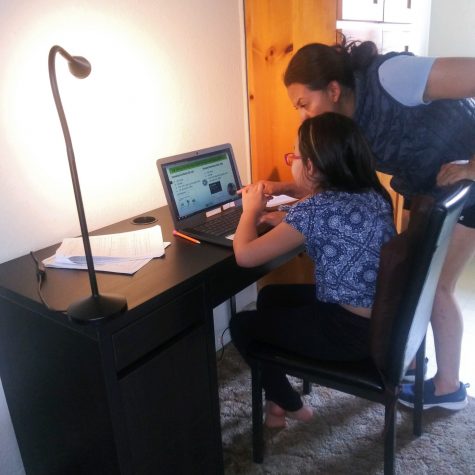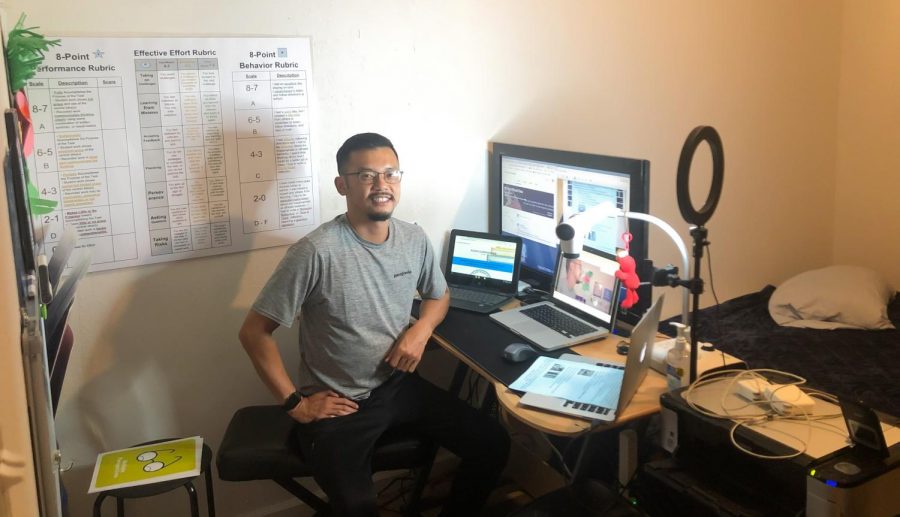Many school districts, grappling with challenges from the pandemic, have made the decision to teach through remote learning this year, forcing many parents and guardians to make the best of the situation and help their children adapt. For parents with English language learner students the switch to remote learning has been far more difficult than expected.
Amada Margarita Torres and her daughter Maria Y. Granados moved from Michoacan, Mexico in 2018. Maria is a fourth grader at Mark Twain Elementary school where she has been part of the ESL program for the past two years.
Torres, who doesn’t speak English, said she worries she won’t be much help for her daughter this school year.
Many parents rely on these after school programs to help their children with their homework, along with WIFI access.
Programs like ESL allow opportunities for their children to keep practicing their English and socialize around other kids.
“Maria is still very young and was just breaking out of her shell and getting comfortable with her school and classmates,” said Torres.

Her English was improving but now I’m worried that with remote learning she won’t be interactive with the other kids through Zoom.”
Despite her worries, Torres expressed how relieved she is that her daughter is a bit tech savvy and has managed to figure out her way through Zoom.
“I know nothing about computers, so at least now that’s one less thing… to worry about,” said Torres.
For many immigrant parents it is not uncommon for many to have little experience navigating a computer, let alone have an understanding of how to utilize special tool functions.
This becomes another obstacle that most parents will have to face during the switch to remote learning.
Poev Heng, a Norwalk local, shared how she experienced technical issues trying to get her nephew to join his class meeting on his first day of school.
Both Heng and her nephew were born in Cambodia and English isn’t their first language. Due to the language barrier, Heng struggled with understanding the instructions that were provided to her via email on how to connect her nephew online.
The miscommunication resulted in her nephew being marked tardy on his first day and called out by his teacher. “When it comes to technology and gadgets I only know how to use my phone,” said Heng.
So clicking around on my nephews computer and not getting anything to load really overwhelmed me and him.”
Heng understands that remote learning is a learning experience for everyone. The language barrier between parents and teachers, however, can be a bit of a challenge.
With many questions and concerns about the school switch, communicating them to teachers and staff will be more difficult.
Andrew Vo, a teacher at Aloha Elementary located in the ABC Unified School District, expressed how troubling it can be trying to communicate with a parent who doesn’t speak English or has minimal understanding of it.
In some cases the student is left having to take the roll as a translator for better communication between both parties.
This can also be the case for some families at home. Parents who are already trying to figure out how to work out technical issues with Zoom are also relying on their children to explain what it is and what they need to solve.
This is why, according to Vo, some school districts have provided all teachers three days of extensive professional development that focuses on technology software and virtual teaching strategies.
“Now because of the three day training all teachers received, my district now provides tech support for parents, and teachers are supposed to spend the first 20 days helping with all things remote learning before we dive into the content,” said Vo.
School districts are hoping that the help and training provided for everyone will allow the chance for parents and students to take it step by step and slowly ease into remote learning. As for parents like Torres and Heng, all they can hope for is an improvement in teacher and parent communication to help make it easier on their children.

















